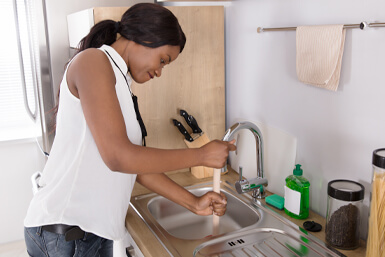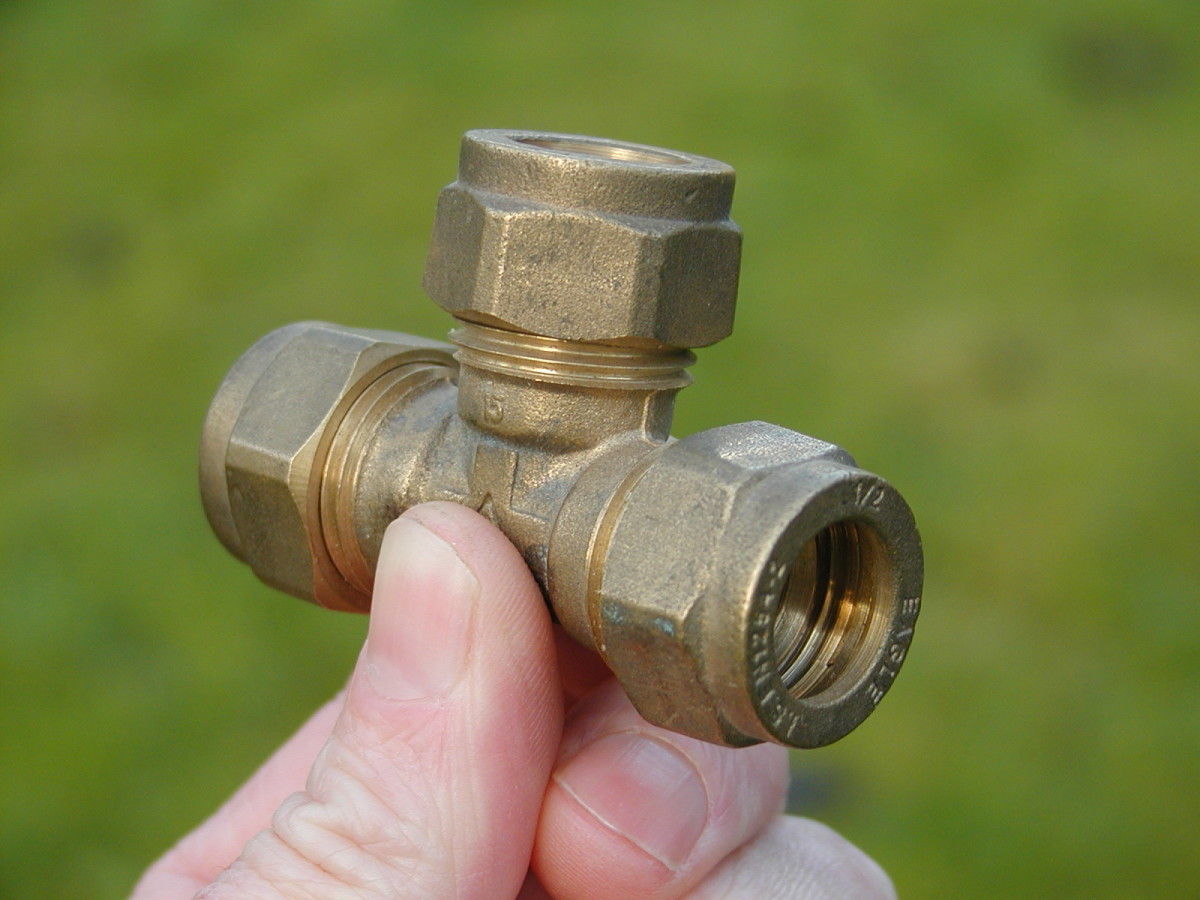Calling in the Pros: Typical Home Appliance Troubles Best Entrusted To Plumbers
Calling in the Pros: Typical Home Appliance Troubles Best Entrusted To Plumbers
Blog Article
We have stumbled on the article pertaining to Diagnose Unwanted Plumbing Noises listed below on the web and think it made good sense to share it with you in this article.

To detect loud plumbing, it is important to figure out initial whether the undesirable sounds happen on the system's inlet side-in various other words, when water is transformed on-or on the drain side. Sounds on the inlet side have actually differed causes: excessive water pressure, used shutoff and also faucet parts, incorrectly attached pumps or various other appliances, inaccurately placed pipe fasteners, and plumbing runs including a lot of tight bends or various other constraints. Sounds on the drainpipe side usually stem from poor location or, just like some inlet side noise, a layout including tight bends.
Hissing
Hissing sound that happens when a tap is opened a little typically signals extreme water stress. Consult your neighborhood public utility if you believe this trouble; it will certainly have the ability to tell you the water pressure in your area and can install a pressurereducing valve on the incoming water pipeline if essential.
Thudding
Thudding noise, often accompanied by trembling pipelines, when a tap or appliance valve is turned off is a problem called water hammer. The sound and also resonance are triggered by the reverberating wave of pressure in the water, which all of a sudden has no location to go. In some cases opening up a shutoff that releases water promptly right into a section of piping including a restriction, elbow, or tee installation can create the exact same condition.
Water hammer can usually be healed by mounting installations called air chambers or shock absorbers in the plumbing to which the issue shutoffs or taps are linked. These gadgets allow the shock wave created by the halted circulation of water to dissipate airborne they contain, which (unlike water) is compressible.
Older plumbing systems might have brief vertical sections of capped pipeline behind wall surfaces on faucet runs for the very same function; these can eventually loaded with water, minimizing or destroying their effectiveness. The remedy is to drain the water supply entirely by shutting off the major water system valve and also opening all faucets. After that open the main supply shutoff as well as close the taps one at a time, beginning with the tap nearest the valve as well as ending with the one farthest away.
Babbling or Shrieking
Intense chattering or shrilling that happens when a shutoff or tap is turned on, which typically goes away when the fitting is opened totally, signals loose or defective interior parts. The remedy is to replace the shutoff or faucet with a new one.
Pumps as well as appliances such as cleaning machines and also dishwashers can move motor sound to pipes if they are improperly linked. Link such products to plumbing with plastic or rubber hoses-never inflexible pipe-to isolate them.
Various Other Inlet Side Noises
Squeaking, squeaking, scraping, breaking, as well as tapping typically are brought on by the growth or tightening of pipes, usually copper ones supplying warm water. The sounds take place as the pipes slide versus loosened fasteners or strike neighboring residence framework. You can commonly determine the place of the trouble if the pipelines are subjected; simply follow the noise when the pipes are making noise. Probably you will certainly uncover a loose pipe wall mount or an area where pipes exist so close to flooring joists or various other framing items that they clatter versus them. Attaching foam pipe insulation around the pipes at the point of call should correct the trouble. Be sure bands and also hangers are protected and also provide appropriate support. Where possible, pipeline bolts should be connected to substantial structural aspects such as structure wall surfaces instead of to framing; doing so minimizes the transmission of vibrations from plumbing to surface areas that can amplify and move them. If affixing fasteners to framework is inescapable, wrap pipelines with insulation or various other resilient material where they call bolts, and also sandwich the ends of new fasteners between rubber washing machines when mounting them.
Dealing with plumbing runs that struggle with flow-restricting tight or many bends is a last resource that must be taken on only after speaking with a proficient plumbing service provider. However, this situation is fairly common in older houses that may not have been built with indoor plumbing or that have seen a number of remodels, particularly by novices.
Drainpipe Noise
On the drain side of plumbing, the chief goals are to get rid of surfaces that can be struck by falling or rushing water and to insulate pipes to contain unavoidable sounds.
In new construction, bath tubs, shower stalls, commodes, and also wallmounted sinks and also containers must be set on or versus durable underlayments to decrease the transmission of noise through them. Water-saving toilets and faucets are much less loud than standard designs; install them instead of older kinds even if codes in your location still allow utilizing older fixtures.
Drainpipes that do not run vertically to the cellar or that branch right into straight pipe runs supported at flooring joists or various other mounting existing specifically frustrating sound troubles. Such pipelines are huge sufficient to emit significant vibration; they also carry significant quantities of water, that makes the circumstance worse. In brand-new building and construction, specify cast-iron soil pipelines (the big pipes that drain commodes) if you can manage them. Their massiveness consists of much of the noise made by water passing through them. Also, stay clear of transmitting drains in walls shown bedrooms and also areas where individuals gather. Wall surfaces consisting of drains must be soundproofed as was described previously, utilizing double panels of sound-insulating fiber board and wallboard. Pipelines themselves can be wrapped with unique fiberglass insulation produced the objective; such pipes have a resistant plastic skin (sometimes having lead). Results are not always adequate.
WHY IS MY PLUMBING MAKING SO MUCH NOISE?
This noise indeed sounds like someone is banging a hammer against your pipes! It happens when a faucet is opened, allowed to run for a bit, then quickly shut — causing the rushing water to slam against the shut-off valve.
To remedy this, you’ll need to check and refill your air chamber. Air chambers are filled with — you guessed it — air and help absorb the shock of moving water (that comes to a sudden stop). Over time, these chambers can fill with water, making them less effective.
You’ll want to turn off your home’s water supply, then open ALL faucets (from the bathroom sink to outdoor hose bib) to drain your pipes. Then, turn the water back on and hopefully the noise stops! If you’re still hearing the sound, give us a call to examine further.
Whistles
Whistling sounds can be frustrating, as sometimes the source isn’t easily identified. However, if you can pinpoint which faucet or valve that may be the cause, you’ll likely encounter a worn gasket or washer — an easy fix if you replace the worn parts!Whistling sounds from elsewhere can mean a number of things — from high water pressure to mineral deposits. Your best plan of attack here is to give our plumbing experts a call. We’ll be able to determine where the noise is coming from and what the cause may be, then recommend an effective fix!
Cracks or Ticks
Cracking or ticking typically comes from hot water going through cold, copper pipes. This causes the copper to expand resulting in a cracking or ticking sound. Once the pipes stop expanding, the noise should stop as well.
Pro tip: you may want to lower the temperature of your water heater to see if that helps lessen the sound, or wrapping the pipe in insulation can also help muffle the noise.
Bangs
Bangs typically come from water pressure that’s too high. To test for high water pressure, get a pressure gauge and attach it to your faucet. Water pressure should be no higher than 80 psi (pounds per square inch) and also no lower than 40 psi. If you find a number greater than 80 psi, then you’ve found your problem!
Next step is to give us a call in order to install a pressure regulator. Trust us, you don’t want to wait to resolve this issue. Not only is the sound annoying, but high water pressure can be destructive to your home — including damaging certain appliances, like your washer and dishwasher.
Dripping
You might be accustom to the slow quiet drip your kitchen faucet makes. You might have even tuned out your bathroom sink dripping and drabbing all day long — but it’s time to find its cause.
A slow drip could signify a variety of easy to fix issues, such as a worn out O ring, or loose part. And by ignoring the drip, you could be wasting up to 2,000 gallons of water a year! So start conserving water — get it looked at ASAP.
https://www.pwessig.com/blog/2018/december/why-is-my-plumbing-making-so-much-noise-/

Hopefully you enjoyed our article about Why Do My Pipes Make Noises. Thanks a ton for taking time to browse our short article. Are you aware of anybody else who is in to the topic? Take a moment to share it. We love reading our article about Why Your Water Pipes Are Noisy and How To Shut Them Up.
Get Estimate Report this page